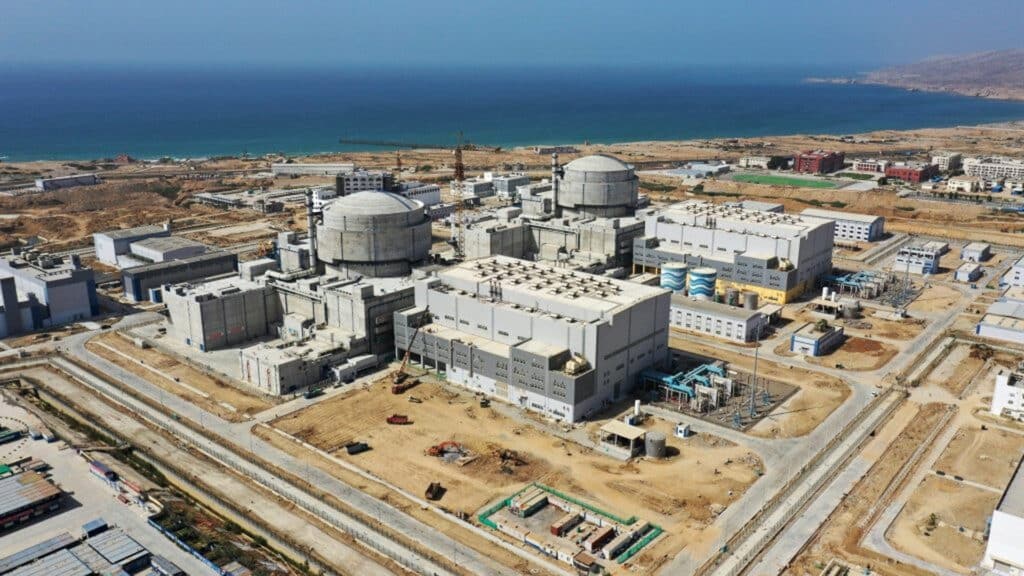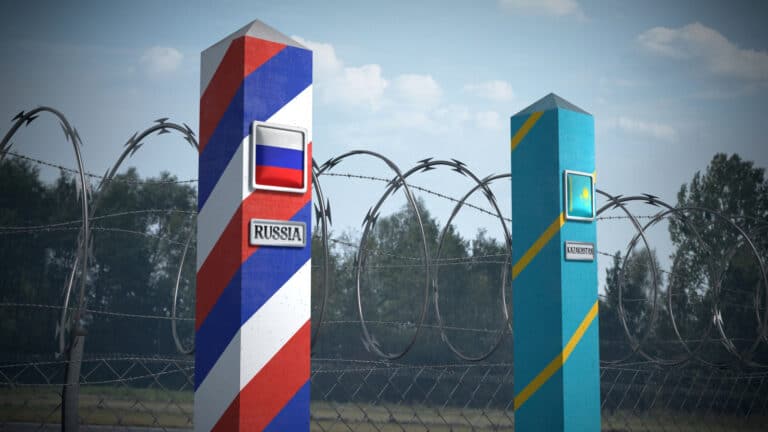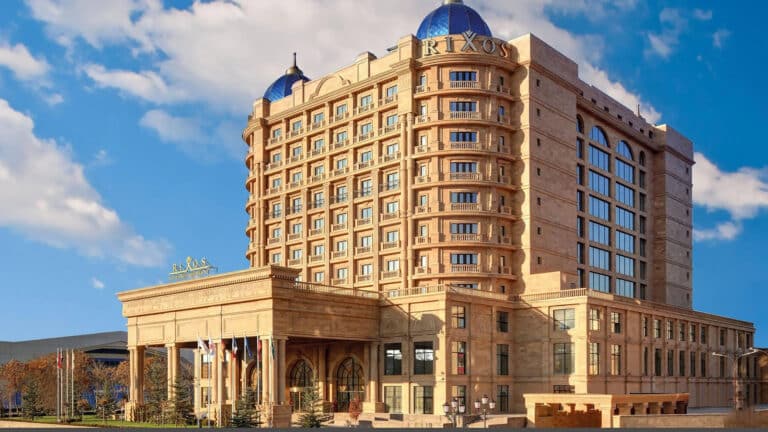
The cost of building a one-gigawatt (GW) nuclear power plant in Kazakhstan is estimated at 20 billion yuan ($2.8 billion), with a five-year construction timeline, according to Li Yudong, deputy head of the representative office of the China National Nuclear Corporation (CNNC) in Central and Eastern Europe. He shared this information with Kursiv.media during the KazAtomExpo.
«Twenty billion yuan is the estimated cost for one unit, with a construction period of five years,» Li said.
If a Chinese contractor is selected, the cost to build a two-unit nuclear power plant with a total capacity of two GW, to be completed by 2035, would be approximately $5.6 billion. The Ministry of Energy of Kazakhstan initially estimated the cost of a 2.4 GW nuclear plant to be $10 billion, with a construction period of 10 years. However, experts, including representatives from Kazakhstan Nuclear Power Plants (KNPP), a subsidiary of Samruk-Kazyna, later revised the estimate to $15 billion.
According to the CNNC official, the Chinese corporation is committed to ensuring the timely delivery of the nuclear plant in Kazakhstan, provided that a positive decision is made in the upcoming national referendum on the plant’s construction and the Chinese bid is selected. Companies from France, Russia, China and South Korea are also participating in the bidding.
«You are our neighbor, and we consider you not just friends but like brothers. We want to grow even closer and work together more actively. Our leaders speak of eternal friendship, which means collaborating and advancing together. Therefore, we are always ready to strengthen our friendship with you,» said Li, commenting on the possibility of China building a nuclear power plant in Kazakhstan under the build-operate-transfer (BOT) scheme.
For example, Rosatom is constructing the Akkuyu nuclear power plant in Turkey under a BOT scheme. The project envisages that part of the electricity generated by the nuclear units will be purchased by Turkey at a pre-agreed rate, while Russia independently manages the construction and financing. The Akkuyu plant will feature four VVER-1200 reactors with a total capacity of 4,800 megawatts (MW). In early September 2023, Alexey Likhachev, head of Rosatom, estimated the cost of the Akkuyu project at between $23 billion and $24 billion. However, in June 2024, he cited a different range: $24 billion to $25 billion. Under the agreement, Turkey will purchase 70% of the electricity from the first two units and 30% from the last two units at a rate of 12.35 cents per kilowatt-hour (kWh).
Earlier, Yernat Berdigulov, managing director for strategy and asset management at Samruk-Kazyna, mentioned that the holding is considering two options for financing the construction of Kazakhstan’s first nuclear power plant: using its own funds and using the National Fund. He explained that 20% to 30% of the plant’s cost will need to be covered by the state holding itself, including contributions from the National Fund, while the remaining 70% to 80% will need to be raised through financial markets.
Berdigulov also noted that many international financial institutions and companies are willing to lend money for the construction. However, Samruk-Kazyna will need to increase the equity of its designated subsidiary, KNPP, by 20% to 30% of the total cost to fulfill its contribution.
China currently has 57 nuclear units in operation with a total capacity of 58.78 GW. An additional 47 units, with a total capacity of 54.71 GW, are under construction. Once these new units are operational, China will have over 100 nuclear reactors with a combined capacity of more than 110 GW.
Vadim Titov, head of the Rosatom delegation at KazAtomExpo, welcomed Kazakhstan’s serious consideration of nuclear power plants, describing them as a crucial component of the future energy mix.
«Rosatom is currently building nuclear power plants not only in Russia but also abroad — 22 units are under construction in seven countries. We are pleased that over the past 18 years, we have launched 18 units. This experience has been invaluable, especially as these units were launched not only in Russia,» he said.
Titov added that Rosatom is prepared to offer various types of reactors, including low-power options, and is willing to provide support on financial matters, fuel development and strategies for managing waste fuel.
Korea Hydro & Nuclear Power (KHNP) General Manager Chaseop Kim highlighted that the company has consistently completed its nuclear projects on schedule. Currently, 26 nuclear reactors are in operation, with several more under construction, including some outside of South Korea.
Laurent Fabre, vice president of EDF, France, stressed that of the 436 reactors worldwide, French companies, including EDF, have built more than 100.
«That means one in four reactors was built by France. While our experience has sometimes been challenging, we have gained valuable insights. Additionally, we receive significant support from the French government, which is crucial when selecting a partner,» he said.
In early 2024, EDF announced a two-year delay, pushing the completion of the Hinkley Point C two-unit nuclear power plant in the UK to 2029. The plant was originally slated for completion in 2027, with an estimated total cost of £26 billion (about $33 billion). Under an alternative scenario, construction would be finished by 2030, with costs rising to £31-£34 billion ($39-$43 billion). A third scenario proposes starting up the first unit in 2031.
A favorable aspect for the French and Chinese bidders is that a facility in Ust-Kamenogorsk produces French-designed fuel assemblies for Chinese nuclear plants. This could potentially allow the supply of Kazakhstani fuel to local nuclear plants if a French or Chinese contractor is selected.
Previously, Minister of Energy Almassadam Satkaliyev stated that Kazakhstan will have to build several nuclear power plants by 2060 to achieve carbon neutrality in the energy sector. The country plans to launch its first 2.4 GW nuclear power plant in 2035, with construction expected to take 10 years and cost at least $10 billion. In contrast, the Chinese offer suggests a timeline that is twice as fast and nearly half the cost.
Meanwhile, Samruk-Kazyna officials have frequently underscored Rosatom’s strengths as a potential partner, citing its extensive experience with reactor construction worldwide. During his first press conference as head of the holding in July 2023, Samruk-Kazyna’s Chairman Nurlan Zhakupov identified Rosatom as a contender for the nuclear power plant project. He also acknowledged several challenges associated with the initiative.
Several international companies have submitted proposals for constructing the nuclear power plant in Kazakhstan, including EDF (France), CNNC (China), Rosatom (Russia) and KHNP (South Korea).
As indicated by Timur Zhantikin, head of KNPP, the construction of Kazakhstan’s first nuclear plant could potentially be funded by the foreign company that wins the bid.
Rosatom has proposed building a nuclear plant in Kazakhstan using VVER-1200 and VVER-1000 reactors. A year ago, the Ministry of Energy estimated the cost of the first 2.4 GW nuclear power plant at $10 billion, which was later revised to $11 billion. In contrast, Timur Zhantikin suggests the cost could be as high as $15 billion. Only a limited number of banks or companies can provide such large sums under long-term conditions, especially as many international financial institutions have ceased financing nuclear power plant construction, no longer considering it a green energy source.
If the nuclear power plant is built by the reactor supplier, the international company can recover its investment, with a margin, through negotiated electricity rates. The investor may also secure guarantees for purchasing a portion of the electricity generated by the plant.
The proposals from four contenders indicated that the cost of generating one kWh at the nuclear power plant in Kazakhstan would be 8 cents or approximately KZT34.86, based on the National Bank’s exchange rate at that time, according to Zhantikin.
By 2035, electricity consumption in Kazakhstan is projected to reach 152.4 billion kWh. However, due to decommissioning, increased wear and tear and stricter environmental regulations, the output from currently operating energy sources is expected to decline to less than 135 billion kWh.
Today, the majority of electricity in Kazakhstan is generated by coal-fired plants, which account for 66% of the total generation. At the same time, renewable energy is proliferating; by the end of 2023, there were 148 renewable power facilities and renewable energy generation reached approximately 6%.
To meet future demand, Kazakhstan will need to commission new generating facilities with a total capacity of 26.5 GW by 2035. The projected new energy mix is as follows: 27% gas generation, 12% hydropower, 17% coal-fired generation, 9% nuclear power plants and 36% renewables.













